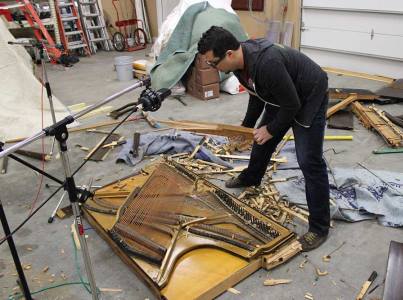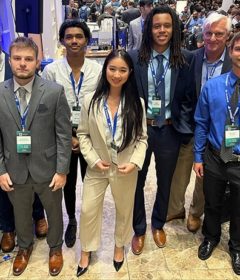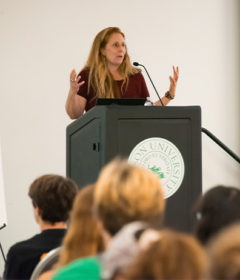D.A. Alumnus Designs Award-Winning Tools
 Joe Trupiano ‘04, who received his bachelor’s in digital arts at Stetson University, co-founded a company with Keith Robinson called Sample Logic LLC in 2006. The company was born from his thesis at New York University, where he received his master’s in composition and music technology. Since then, he has provided the award-winning tools for musicians and composers involved in film, television, and videogames.
Joe Trupiano ‘04, who received his bachelor’s in digital arts at Stetson University, co-founded a company with Keith Robinson called Sample Logic LLC in 2006. The company was born from his thesis at New York University, where he received his master’s in composition and music technology. Since then, he has provided the award-winning tools for musicians and composers involved in film, television, and videogames.
“I learned many important things at Stetson,” said Trupiano. “I was taught everything from web design to graphics and marketing. The experience has helped me put a tangible vision and story to the products of the company I’m a part of.
“Stetson’s phenomenal Digital Arts program was what originally caught my interest,” explained Trupiano. “Many of the classes I had were project-oriented. It didn’t really feel like school, but more like a community set out to inspire. This made the D.A. program highly enjoyable and continuously pushed me to think outside the box. The professors in the department were actively engaged with the students by meeting and assisting us and offering inspiring ideas on projects.”
“Joe was a great student and a hard worker,” said Nathan Wolek, Ph.D., associate professor of Digital Arts and Music Technology and chair of the Creative Arts Department. “I remember that he would always come to our meetings with new musical material prepared and ideas for where we could take whatever project the course was working toward.”
Trupiano’s co-founded company Sample Logic LLC continues to release widely used tools.
“We design award-winning, modern day, virtual instruments specifically geared for film, television, and game composers,” said Trupiano. “Essentially, they are tools for musicians and composers to make music. Our products have been used in Avatar, CSI, Law and Order, South Park and much more. Our clients range from musicians and DJs who are just starting out to established musicians and composers such as Hans Zimmer, James Newton Howard, and The Crystal Method.”
Since Trupiano graduated, the Digital Arts program has developed and expanded.
“We have grown substantially,” said Wolek, “and we recently made some needed improvements in our facilities. This is just the beginning. Digital Arts is also now part of the large Creative Arts Department, of which I am the chair. It is far easier these days for students to work across the creative disciplines on campus and collaborate. Because we are at a liberal arts institution, our process doesn’t end with learning to use the tools. The tools are just a vehicle for expression, and we purposely push students to reflect on that creative process during their time at Stetson. We also integrate such thinking across a variety of creative applications, so students are not limited to only visual or coding or musical applications. They have the freedom to explore and develop expertise in all three. With that said, we are going to continue improving the quality of our academic program and the students we attract.”
In the photo, Trupiano dismantles a piano to transform its inspiring sounds into “evocative, cinematic instruments ready for all styles of sound production,” as described on the CINEMATIC KEYS website. CINEMATIC KEYS is a collection of keyboard instruments that are “destroyed to innovate,” and geared for film, television and game composers.
By George Salis



